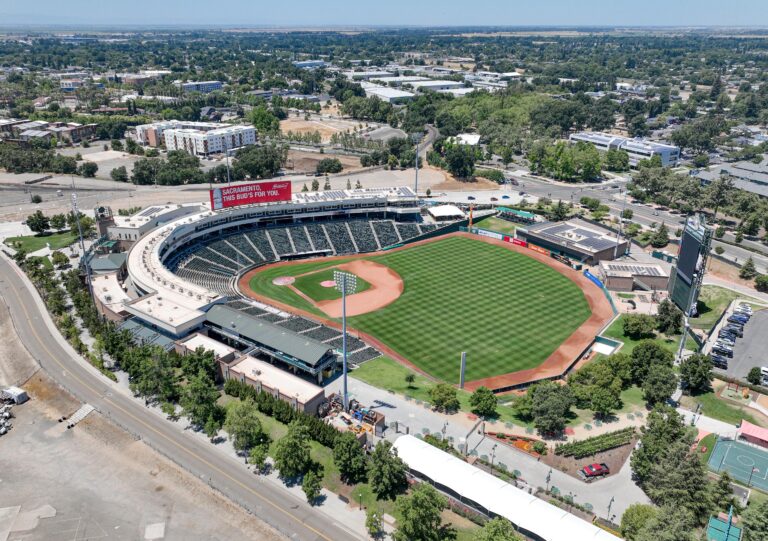Oakland Athletics Begin Sacramento Journey Amid Facility Challenges and Mixed Reactions
Transitioning to Sacramento: Athletics Play in Minor-League Stadium, Stirring Concerns
The Oakland Athletics have officially launched their Sacramento era by hosting games in a stadium originally built for minor-league baseball. This shift has elicited a range of responses, particularly from visiting teams who have raised issues regarding the venue’s suitability for Major League Baseball. The move represents a pivotal moment in the Athletics’ relocation process but also underscores the hurdles involved in adapting to a less conventional home field.
Opposing players have highlighted several challenges, including:
- Non-standard field dimensions that disrupt typical gameplay strategies
- Limited and outdated amenities that fall short of major-league expectations
- Restricted locker room space complicating pregame routines
| Facility Challenge | Effect on Gameplay |
|---|---|
| Reduced foul territory | Increased number of balls in play, boosting batting averages |
| Constrained bullpen areas | Pitchers experience cramped conditions during warm-ups |
| Studio-style lighting setup | Visibility issues during night games |
Visiting Teams Critique Sacramento Ballpark’s Facilities and Atmosphere
Players from visiting teams have openly voiced dissatisfaction with the current state of the Athletics’ new home field. Many describe the environment as reminiscent of a minor-league setting rather than a major-league stadium, citing cramped locker rooms and insufficient training facilities. The limited fan seating and subdued crowd energy further contribute to a less inspiring atmosphere, which some players feel diminishes motivation and competitive spirit.
Specific concerns include:
- Inadequate space for warm-up exercises and post-game recovery
- Outmoded infrastructure and maintenance issues
- Restricted seating capacity leading to lower fan engagement
- Questions about the venue’s long-term viability for a major-league franchise
| Facility Component | Visitor Feedback | Consequences |
|---|---|---|
| Locker Rooms | Overcrowded and outdated | Reduced comfort and preparation efficiency |
| Training Facilities | Limited equipment availability | Impedes optimal player conditioning |
| Fan Areas | Few seats and low energy | Weakened home-field advantage |
How Stadium Conditions Influence Team Performance and Player Well-Being
The Athletics’ move to a minor-league ballpark in Sacramento has brought to light the tangible impact of stadium quality on both athletic performance and player experience. Concerns about the playing surface, cramped dugouts, and limited training resources have been echoed by visiting teams, who must quickly adjust to these less-than-ideal conditions. Such factors can affect game outcomes and the overall readiness of players.
Key elements affecting athletes include:
- Playing Surface: Uneven turf and poor drainage create unpredictable ball behavior and elevate injury risks.
- Player Amenities: Tight locker rooms and scarce recovery spaces hinder preparation and post-game recuperation.
- Game Atmosphere: Smaller crowds and reduced fan enthusiasm can lessen the intensity and excitement typical of major-league contests.
| Issue | Effect | Player Comments |
|---|---|---|
| Uneven Turf | Inconsistent ball movement | “The ball doesn’t roll as expected.” |
| Cramped Dugouts | Limits strategic planning | “Not enough room to prepare.” |
| Insufficient Facilities | Impairs recovery and wellness | “Falls short of MLB standards.” |
Strategies to Improve Visiting Team Comfort and Boost Fan Engagement
To address the concerns raised by visiting players and enhance the overall experience, a comprehensive upgrade of the stadium’s facilities is essential. Modernizing locker rooms with features such as advanced climate control, private suites, and state-of-the-art recovery equipment—including hydrotherapy pools and compression therapy devices—would greatly improve player comfort and readiness. Additionally, creating dedicated spaces for mental health support and pre-game focus sessions could foster a more supportive environment for athletes.
Enhancing fan engagement is equally important. Introducing interactive elements like augmented reality (AR) experiences and behind-the-scenes stadium tours can deepen fan involvement and create memorable game-day experiences. Upgrading concession stands to offer locally sourced foods with sustainable packaging would not only appeal to community pride but also promote environmental responsibility.
| Focus Area | Suggested Improvements |
|---|---|
| Visiting Team Facilities | Private locker suites, advanced recovery technology, mental wellness rooms |
| Fan Experience | AR zones, immersive tours, local cuisine vendors, eco-friendly packaging |
Final Thoughts on the Athletics’ Sacramento Transition
As the Oakland Athletics embark on their new chapter in Sacramento, the challenges highlighted by visiting players emphasize the need for ongoing improvements. While the current minor-league stadium setting presents obstacles, it also offers an opportunity to innovate and redefine the fan and player experience. The coming season will be a critical test of how these factors influence the team’s performance and the broader evolution of Major League Baseball’s footprint in new markets.




